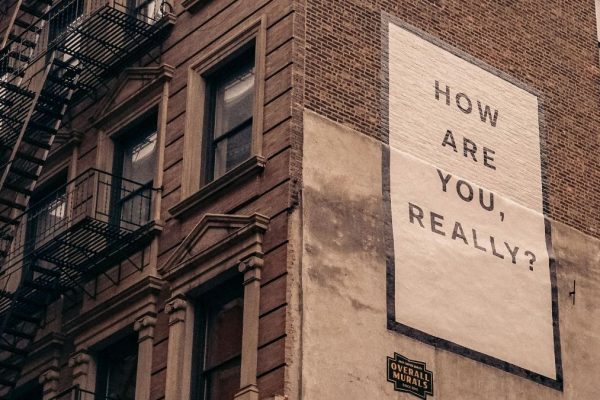
Working social media in many industries, particularly higher education, can be a demanding and constant responsibility. Realizing a need to provide something for these professionals, but without adding to cognitive load, two HighEdWeb members developed a wellness newsletter.
Erin Supinka, associate director of digital engagement at Dartmouth College, and Krista Boniface, senior social media strategist for University of Toronto, started down the road toward the newsletter after co-presenting a session at last year’s CASE Social Media and Community conference, “Taking Care of Ourselves While Managing Community.”
“We wanted to give participants a practical takeaway that would continue with them after the conference ended and we went back to our lives,” Boniface said. “The initial audience was sparked mostly from the presentation itself and social media shares of the newsletter for that outside of the conference as well.”
Supinka noted that it provides an alternative to many “newsletters and projects that would help you accomplish something in x amount of time. I noticed that a lot of them would give you tasks or suggestions that felt like a leap versus just a step toward the goal.”
With everybody so busy already, the demanding approach seemed counterproductive. “I found myself falling off when something like that was assigned,” Supinka said. “For example, I joined so many projects that were designed to help folks develop a healthier relationship with their phone that would kick off with something like ‘delete social media app’ or ‘disconnect your email.’”
These are impractical for many people, especially those who work in social media, “and very, very rarely did any of them offer modified versions of a task to make it more accessible,” Supinka added.
“After so many false starts and failed attempts, it finally clicked that I was only focusing on the big goal and not celebrating the little wins along the way,” Supinka explained. “Then, I looked around and recognized that so many of my colleagues were in the same exact boat. So many of us just didn’t know where to start or how and needed a push. This email felt like an opportunity to not only give myself that little push to get going but to help others too.”
‘Pause more, care more’
The newsletter’s goal, Boniface said, is to tell colleagues that others recognize that they are doing a lot while offering ways to help.
“We want to provide a little shelter from the storm that can sometimes be higher ed social media,” Boniface said. “If our letter makes people pause more, care more about themselves and take little opportunities to take wellness seriously, then it’s done its job.”
Instead of giving people something else to plan or coordinate, the newsletter is a gift to make their colleagues’ lives at least a little better.
“You take what feels good or right for you and you leave the rest,” Supinka said. “Taking a few moments for yourself or putting yourself first shouldn’t be a project — even though for many of us it starts as one — and should be a part of our flow. Taking care of ourselves should come naturally and to get there we wanted to start small and with suggestions that were accessible.”
Because they both work in social media for higher education, they understand how heavy these positions can be — and that the need for support is greater than ever.
“West Virginia University’s study led by our colleague Tony Dobies on Higher Ed Social Media Managers and Their Mental Health shows more than ever that we all need support in this area,” Boniface said. “Erin and I developed this letter to be both a check-in and an easy-to-read resource of suggestions that were tailored to our experience. We don’t turn off in this job, so this letter is a little reminder that we need to change our conversations and behaviors around this, for our own well-being.”
“So many folks in our community are caregivers — in more ways than one — and yet, so many of us (us included) weren’t stopping to take care of ourselves,” Supinka noted. “In other terms, the oxygen masks had dropped down and we were running around helping everyone put on their own but had never stopped to put one on ourselves.”
The reaction has been positive, which encourages them to keep the effort going.
“It’s been really, really good,” Supinka said. “It’s been validating to know that we weren’t the only ones that are struggling right now and that so many of us are searching for the same solutions, tricks, suggestions, etc.”
“We’ve had people tell us on social media that our letter couldn’t have come at a better time,” Boniface said. “And for those discovering it letter by letter via social media, it gives them an opportunity to gain something for themselves.”
While they originally planned a set of three newsletters, this response has them pondering what more to do, depending on their own interest and capacities.
“The frequency isn’t as high as other regular newsletters, so we hope it will appear in inboxes as something a little different,” Bonface said. “We would love for the letter to spark more conversations around this online using #BeWellHESM. When we take wellness seriously, even if it’s one email encouragement at a time, it’s worth it for us.”
The conversation on this topic, they know, is only just beginning.
“We’re looking to continue the series, in bite-sized, low-commitment chunks, so that people can join and take what works for them and leave what doesn’t,” Supinka said. “More details will be available in the next email!”
If you’re interested in the newsletter, you can sign up online and check out the first edition and second installment.

